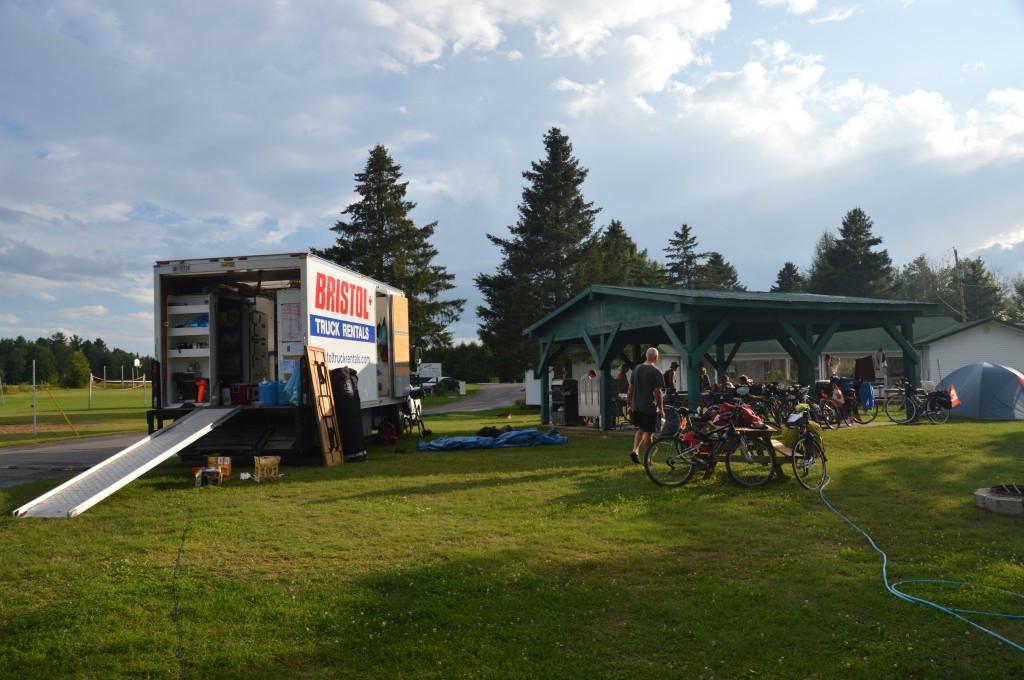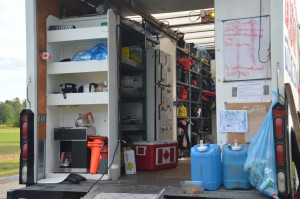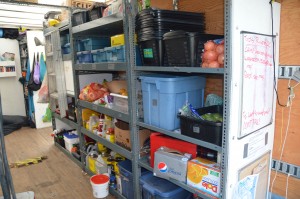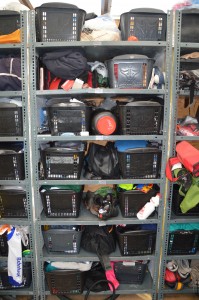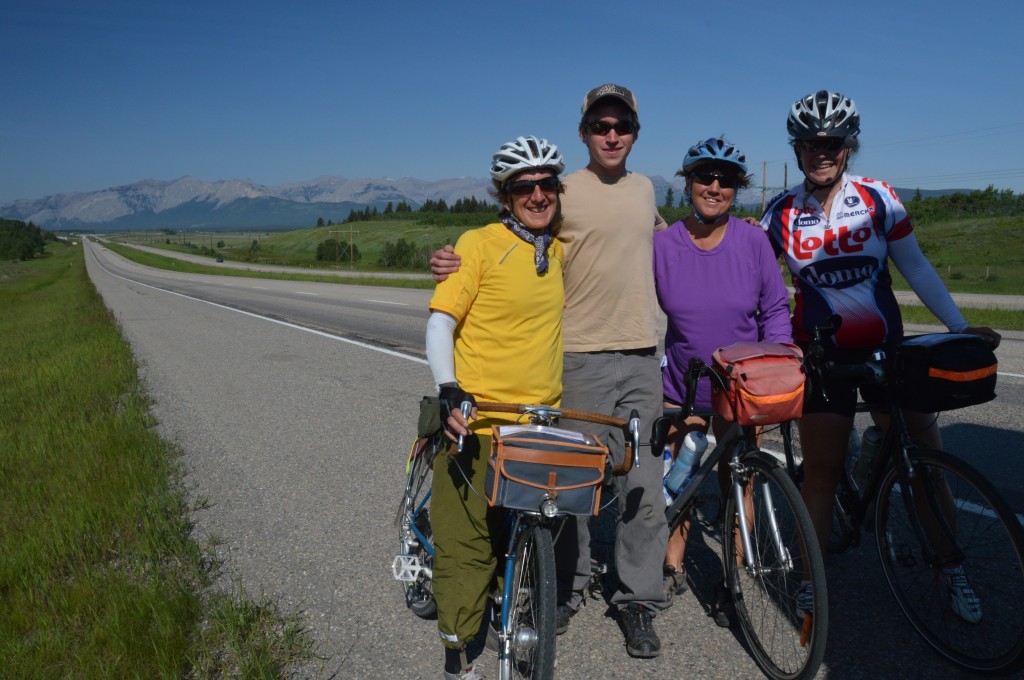Our lifeline – the Truck
A five-ton truck follows the Tour du Canada riders across the country going from campground to campground with necessities. On the left side of the rear compartment of the truck from the front to back are three columns of seven shelves for the riders, a small fridge, a large fridge and shelves for pots, pans, and utensils. Above the small fridge are outlets for the plethora of electronics without which our world cannot live including cell phones, laptops, and bike computers with rechargeable batteries. Above the large fridge are racks of bread. At the rear is the coffee maker and supplies for those cranky, morning people including me.
On the right side of the compartment there is another column of shelves for the riders. Next is the side door, then more shelving for food, some bulk-quantity, food bins such as oats (porridge), powdered milk, pancake mix, and gorp. Three, five-gallon jugs for water are at the rear.
Each rider is entitled to a shelf which is large enough to hold two laundry baskets (supplied). Outfitting oneself and reasonably packing, the shelf holds what is required during the ten-week tour including clothes, shoes, toiletries, and personal effects. Each rider is responsible to bring a “mess kit”, a plate, bowl, cup, knife, fork, and spoon, which is kept in a bag and hung out of the way when not in use.
The large fridge keeps the perishables like fruit, vegetables, yogurt, milk (made daily from powder), and anything required to be frozen. A second smaller fridge keeps pop and beer (who’d have thought) cool for our arrival in camp at night.
When in transit, the aisle is packed with riders’ duffel bags containing tent, thermarests, and sleeping bags near the front. The three-burner, propane stove takes up considerable space in the centre part of the aisle. Near the rear, four, collapsible tables and canopes (rainy weather or for shade) are stored.
This summer, Adam was our truck driver on whom we came to depend. Adam was a University of Guelph student who performed the job admirably.
Normally, the truck would follow the rider’s route to the next campground. When Adam passed us, we would tap the top of our helmet if we required anything from the truck, primarily more water, food, or minor first aid supplies. Otherwise, each rider was to carry what they needed daily including water, food (fruit and PBJ sandwiches), personal articles (camera, phone), and appropriate clothing.
